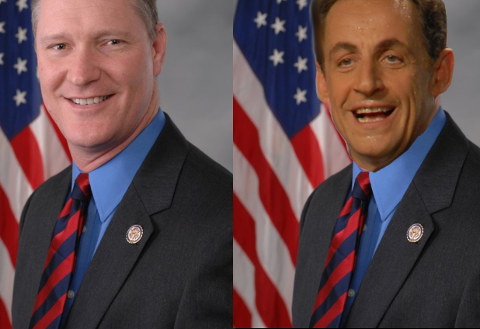

THE big (and rather encouraging) strides of the USPTO's PTAB have been tracked here for years. We, notably software professionals, ought to guard PTAB from critics, who are mostly patent parasites who became accustomed to suing or threatening to sue using software patents. PTAB, for the uninitiated, eliminates a lot of software patents. There's no lack of examples and we're unable to keep abreast of them all (some try, mostly PTAB haters).
"PTAB, for the uninitiated, eliminates a lot of software patents.""Palantir loses patent case at PTAB," he also said, because "analyzing large data sets is just an "abstract idea"" and, among the exceptions: "Super RARE split decision at PTAB declares advertising in virtual worlds with Avatars is NOT "abstract idea" [...] What a difference a panel makes!"
PDFs are included there (original decisions).
A few days ago Docket Navigator took note of DODOCASE VR, Inc. f/k/a DODOcase, Inc. v MerchSource, LLC d/b/a Sharper Image et al. It's about denying a petition (IPR) at PTAB: "The court granted plaintiff's motion for a preliminary injunction requiring defendants to withdraw their petitions to the PTAB seeking to invalidate plaintiff's patents-in-suit because plaintiff established a likelihood of success on the merits of its related breach of contract claim."
"Those who dislike IPRs (and try to stop them altogether) are typically those possessing and actively using -- in a litigious sense -- weak patents. A lot of these are patent trolls."PTAB typically considers some very weak and very abstract software patents after defendants (or victims of extortion) petition it to do so. Those who dislike IPRs (and try to stop them altogether) are typically those possessing and actively using -- in a litigious sense -- weak patents. A lot of these are patent trolls. Sometimes it's their representatives and front groups, e.g. sites such as IAM.
Politicians for patent trolls, however, persist with their laughable proposal or a bill, the "STRONGER Patents Act" (actually weaker patents). Reposted yet again by Jones Day was this piece titled "STRONGER Patents Act Being Introduced to the U.S. House of Representatives" and United for Patent Reform wrote: “The STRONGER #Patents Act prevents state attorneys general from protecting their citizens from abusive #patenttrolls & creates numerous loopholes that will allow trolls to escape liability.” Read more of our letter to @RepSteveStivers and @RepBillFoster: http://bit.ly/2ukBoKS
We posted that letter earlier this month. The CCIA's Josh Landau has just mentioned another threat, this time from Senator Coons: He explains:
Senator Coons has long been interested in strengthening patents. While some of his efforts, like the STRONGER Patents Act, would actually harm the U.S.’s innovation economy by strengthening patents at the expense of innovation, his latest bill is different.
Last week, Senator Coons (along with Senator Hatch) introduced the Building Innovation Growth through Data for Intellectual Property Act, or “BIG Data for IP Act.” The bill has two main features—extending the Patent Office’s fee-setting authority, and requiring the Office to produce a report on its IT infrastructure, a plan for modernizing that infrastructure, and a report on the use of advanced data science techniques to improve the examination process.
Fee-Setting Authority Matters
Prior to the America Invents Act, the Patent Office didn’t actually set its own fees. Instead, Congress set them. This meant that, even though the Patent Office is supposed to fund its operations through the fees it collects, they couldn’t change those fees to reflect changing costs or to fund needed infrastructure—they had to wait for Congress to do it for them. That’s not an ideal situation.
But it’s actually worse than that. The Patent Office now collects enough, overall, to fund its own operations—but the fees for a given action don’t necessarily reflect the cost of that action. In particular, the fee for examining a patent is actually significantly lower than the cost of examination, with the shortfall made up for by issuance and renewal fees (which are significantly more expensive than the cost of issue or renewal.)
[...]
The final portion of the bill, reporting on the use of data science like machine learning and big data to improve the patent examination process, is also useful. Using big data tools like Google BigQuery, Patent Progress has been able to show that the Alice decision affects a very small proportion of patent applications and that so-called “IPR off-ramp” procedures are already available, if patentees want to use them.
If a patent lawyer can produce this kind of insight in a limited timespan using these kinds of tools, a trained data scientist with support from the Patent Office should be able to provide real insights into improving patent examination. And improved patent examination, in turn, leads to fewer low-quality patents issuing, fewer inter partes reviews to challenge low-quality patents after issue, and less abusive patent litigation.
"PTAB IPRs, part of AIA (America Invents Act), will certainly come under many attacks ahead of a decision on Oil States (expected to come soon from the US Supreme Court)."Joseph Robinson and Robert Schaffer wrote two pieces just before Easter [1, 2] in which they speak about PTAB (the Board).
"The Federal Circuit thus vacated the Board’s claim construction as erroneous," they wrote, "construed aseptic to mean the “FDA level of aseptic,” as previously decided, vacated the Board’s non-obviousness determination, and remanded for further proceedings."
Robinson and Schaffer basically picked one of those rare cases. Here's a more common outcome:
The ’435 patent, owned by Steuben, is directed to a sterilization tunnel pressurized with sterile air, as part of aseptic packaging of food products. After Nestle challenged the ’435 patent in an inter partes review, the Board found a number of the claims obvious and unpatentable. The claims recited a specific sterilant concentration levels in the different zones of the sterilization tunnel. Steuben appealed, and the Federal Circuit affirmed.